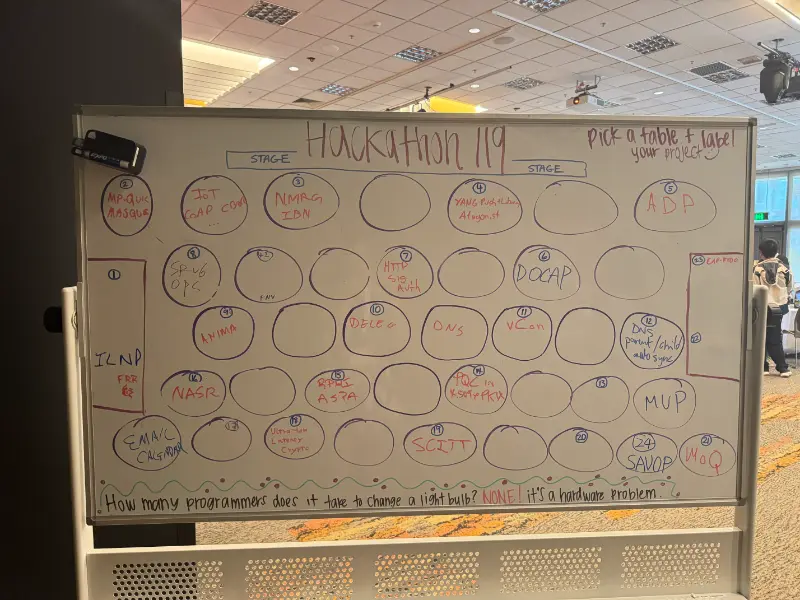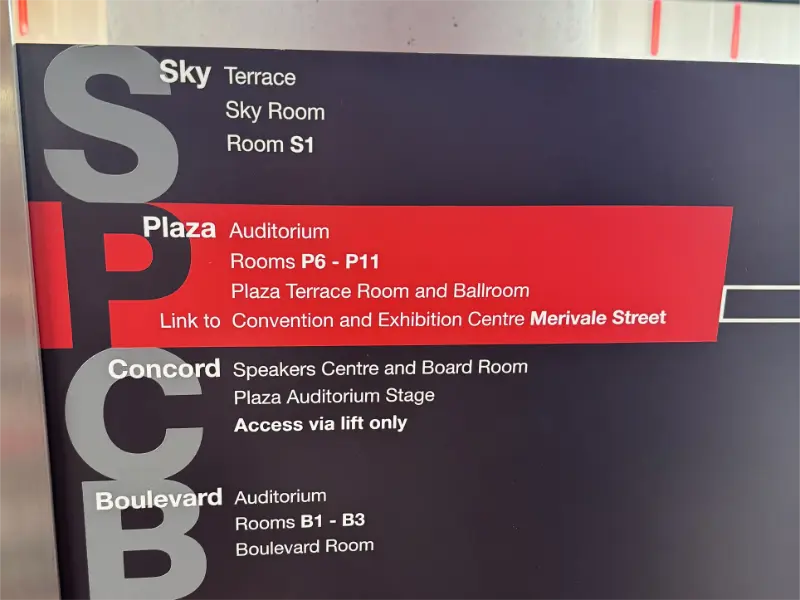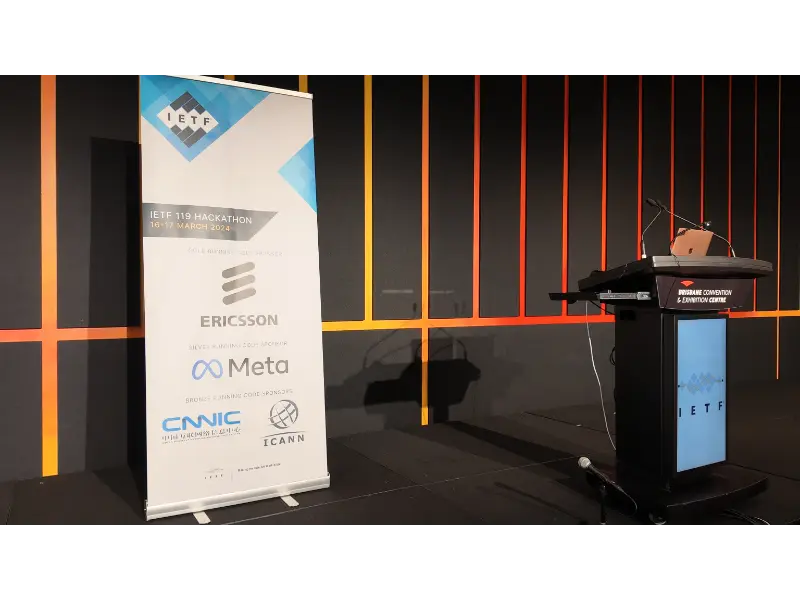- “The overall goal of the IETF is to make the Internet work better.”
- IETF 119 is based on the network, and many rich forums, lectures, etc., including Workload Identity in Multi System Environments, Domain Name System Operations,Javascript Object Signing and Encryption.
- IETF Hackathon goal is to bring the IETF open source development speed and cooperation spirit, and developers, and young people to the IETF, and let them contact and interested in the IETF.
On March 16, 2024, IETF 119 officially began at the Brisbane Convention & Exhibition Centre in Brisbane, Australia. There were a total of 1286 registered participants at the conference, including 668 on site participants and 618 online participants.
What’s for the very first day?
The first two days will be additional events, with an IETF hackathon and IETF code printing on March 16th. On the afternoon of March 17, the IETF will help new participants get the most out of the IETF meeting and plan their own schedule. This arrangement will also allow new participants to gain a deeper understanding of IETF meetings.
Also read:Manal Ismail honoured with ICANN Community Excellence Award 2024
Also read: Paralysed patients walk again after Singapore RESTORES trial
IETF Hackathon
The IETF Hackathon encourages developers and subject matter experts to collaborate on utilities, ideas, sample code, and solutions that demonstrate real-world implementations of IETF standards.

The goals of the IETF Hackathon are: to advance the pace and relevance of IETF standards activities by bringing the speed and collaborative spirit of open source development to the IETF, and to bring developers and young people into the IETF and get them exposed to and interested in the IETF. Here are the Co-Chair for Hackathon: Charles Eckel, Cisco, Barry Leiba, Futurewei, and Benno Overeinder, NLnet Labs. On the second day of the event, 17 March, the Results of the Hackathon will be presented at the Hackathon Results Presentations from 14:00-16:00.
Past IETF hackathons have covered topics in almost every area of IETF work, including DNS, FD. io/VPP, HTTP 2.0, NETVC, OpenDaylight, ONAP, RiOT, QUIC, TLS 1.3, WebRTC, YANG/NETCONF/RESTCONF, etc.
The conference is web-based and in two floors, Mezzanine level and Plazalevel, there are many rich forums, lectures and more. Including Workload Identity in Multi System Environments, Distributed Mobility Management, Measurement and Analysis for Protocols, Network Management Operations, Inter-Domain Routing, Domain Name System Operations, Javascript Object Signing and Encryption, Limited Additional Mechanisms for PKIX and SMIME, Secure Telephone Identity Revisited, Autonomic Networking Integrated Model and Approach, System for Cross-domain Identity Management and so on.

About IETF Meetings
The IETF holds three week-long meetings a year. Onsite participation averages between 1000 and 1500 participants. Every effort is made to integrate the 600+ remote participants into the overall meeting experience.
IETF meetings are very different from standard industry conferences as they are working meetings with the primary goal of helping Working Groups (WGs) get their tasks done, and the secondary goal of promoting mixing among the WGs. For that reason, most of the agenda is comprised of multiple simultaneous sessions for Working Groups. There is no exposition hall and only a small section of the agenda is set aside for tutorials, industry presentations, panel sessions, and opportunities for the whole community to come together.

